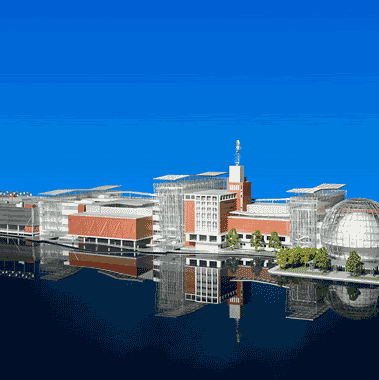whighlander
Senior Member
- Joined
- Aug 14, 2006
- Messages
- 7,812
- Reaction score
- 647
Re: Museum Of Science Renovation/ Addition
Time to Regenerate this thread as major things are underway at the ole MOS beginning with the launch in a few weeks of the largest single exhibit in MOS history the "Hall of Human Life" on the 2nd floor of the former "Green Wing"
http://www.mos.org/campaign/facilities-and-sustainability
Next to come [2015] -- the the early planning stage is well underway thanks to $10 M from the Yawkee Foundation --- the "Charles River Gallery" will open-up in front of you as you enter the MOS
From a story in the Globe that ran last January:
Finally there will be a comprehensive exhibit devoted to "What is Technology" as a portal to the former "Blue Wing"
Time to Regenerate this thread as major things are underway at the ole MOS beginning with the launch in a few weeks of the largest single exhibit in MOS history the "Hall of Human Life" on the 2nd floor of the former "Green Wing"
http://www.mos.org/campaign/facilities-and-sustainability
Rejuvenating Our Iconic Campus
More than half of the Museum's 130,000 square feet of exhibit space will be transformed during the life of The Campaign for the Museum of Science, and with the relocation of the main Information Booth, an open lobby will greet visitors and offer an unobstructed view of the Charles River.
Centered on the museumgoer's experience, key enhancements to all levels of the garage entrance and the concourse will improve initial wayfinding and visitor services. New skylights in the Blue Wing will bring natural light to our Exhibit Halls, and new finishes from floor to ceiling will refresh and contemporize our décor.
Next to come [2015] -- the the early planning stage is well underway thanks to $10 M from the Yawkee Foundation --- the "Charles River Gallery" will open-up in front of you as you enter the MOS
From a story in the Globe that ran last January:
a $21 million gallery overlooking the river that will feature interactive displays on its ecosystem and history, live plant and animal exhibits, and an outdoor garden along the water.
The three-story gallery, funded with a $10 million gift from the Yawkey Foundations, will be the new centerpiece of the 183-year-old science museum, which is in the midst of a broader $250 million campaign to transform nearly half of its exhibit space in coming years.
“These renovations will totally upgrade our image and make the gallery space more state-of-the-art and exciting,” said Ioannis Miaoulis, the museum’s president. “We want to re-orient the museum gradually so visitors understand the natural world, and the human-made world, as well as how they are connected and interdependent.”
The new exhibit space, to be called the Yawkey Gallery on the Charles River, will create a more vibrant entry to the museum that will take better advantage of the museum’s waterfront porch. For example, the project will include massive new, electronically tinted windows that will provide a more dramatic view of the Charles and Boston’s skyline. The gallery will also have digital maps and other visual displays.
Finally there will be a comprehensive exhibit devoted to "What is Technology" as a portal to the former "Blue Wing"

